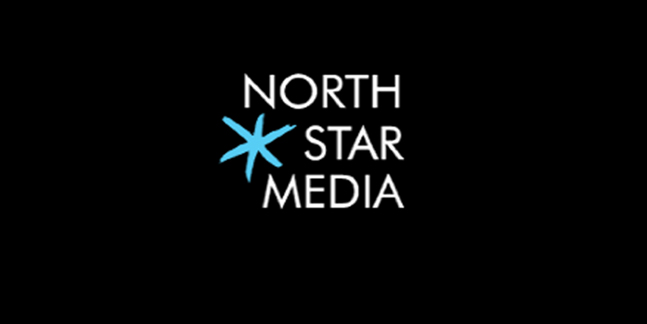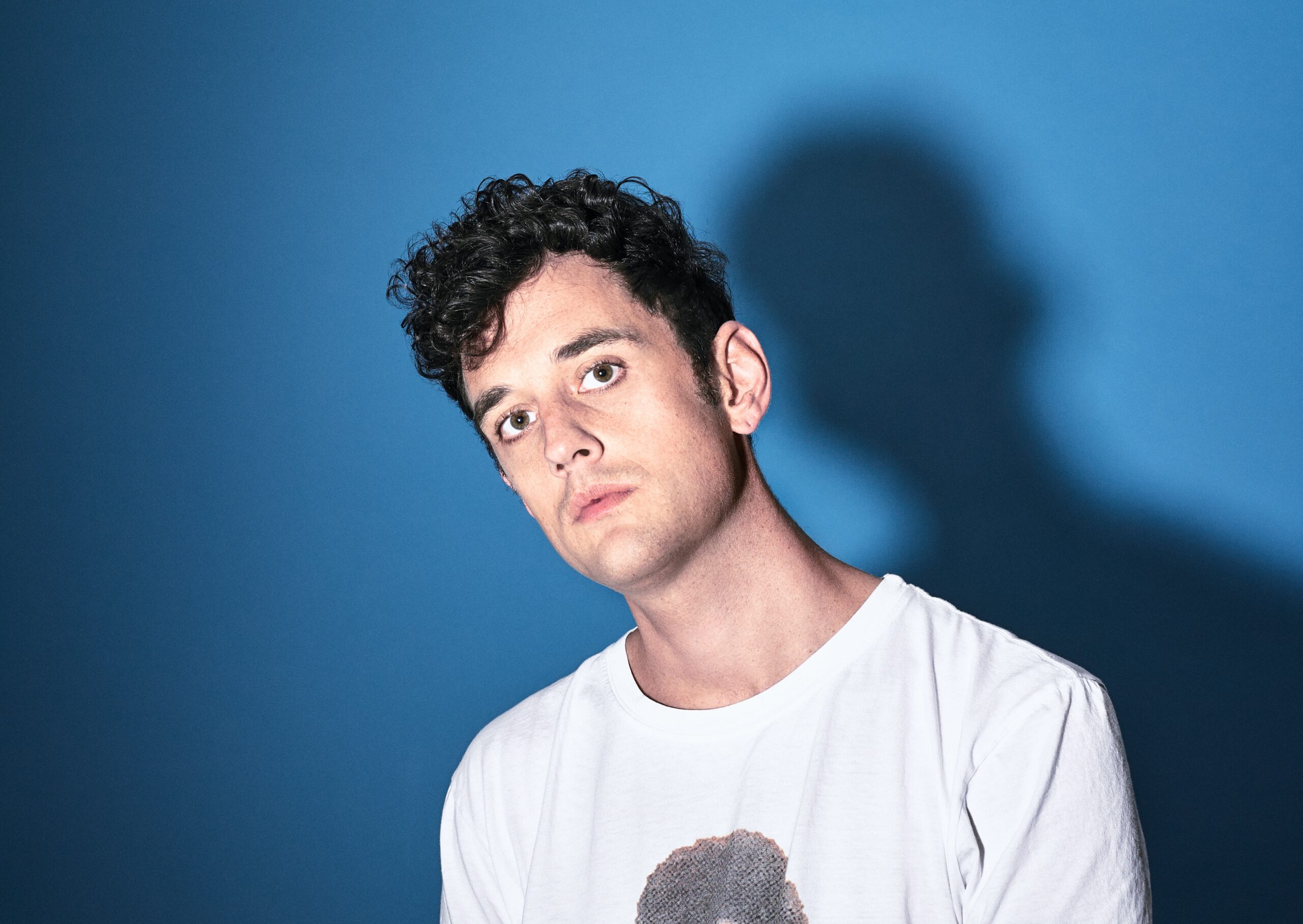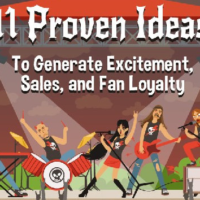Getting Sync Placement
John Sepetys is the Senior Vice President of A&R at North Star Media, a boutique music publisher that offers a personalized, full-service approach to publishing and rights management for artists, film and TV production companies and new media outlets. A Phi Beta Kappa graduate of the University of Michigan, John moved to Los Angeles after graduation to attend GIT in Hollywood, and shortly thereafter got his start in the music business as a production assistant for the songwriter/producer Desmond Child (Bon Jovi, Aerosmith, Kiss). While working for Desmond, John was also playing guitar in a metal band called, Hair of the Dog. The group eventually signed with Spitfire Records, released two albums, and toured heavily throughout the late 90s. Following his career as guitar player, John moved to Nashville in the early 2000s and reconnected with Child, this time becoming the creative director at Child’s publishing company in Nashville. A 7-year stint in artist management followed, until John eventually returned to his hometown of Detroit. Back in the Motor City, he began working at North Star Media in November, 2012. Throughout his career, John has worked with a number of well-known artists, bands and songwriters including Desmond Child, Lit, Steve Vai, Eric Church, and JT Harding.

John spoke about the qualities music supervisors and others are looking for in music to sync to film, television and advertising in the current climate. He also offered up some tips for artists looking to approach music supervisors, publishers and others with original music and how to avoid making the most common mistakes in order to build successful careers.
MC:
Thanks for taking time to talk, John. So, your foray into the music business was being in a metal band called Hair of the Dog.
JS:
That’s correct. Though, actually, prior to the band, I’d say my first big break came after I graduated from the University of Michigan. I went to a guitar school in Hollywood and ended up meeting producer and songwriter Desmond Child.
I became a production assistant for him while I was getting the rest of the band out to California. I learned so much during that time. To this day, Desmond continues to help me out. When I was his assistant, I worked with him on the business side, the production side and was there at ground zero for some of Desmond’s most legendary collaborations.
Then, Hair of the Dog started to take off. We were on Spitfire Records through Eagle Rock, put out a couple records, and toured and really got to live the quintessential rock-n-roll dream. In the end, it was unfortunate timing, because we were ten years too late for the Sunset Strip heyday, and five years too early for when nuts & bolts rock music started to come back. We were operating right in that Korn, Marilyn Manson and Limp Bizkit phase, while still playing straight-ahead blue jean and leather rock n roll. It wasn’t the current “in crowd” stuff by any means.
MC:
It’s hard for a lot of musicians to apply their skills to the business side. How did you transition to what you’re doing now?
JS:
Hair of the Dog did our second record in Nashville in ‘99, and I got to spend a couple months there. I really fell in love with the town, and just made a mental note that when I didn’t need to be in Los Angeles anymore, that would be a great place to live. Around that time, I developed an unfortunate degenerative condition with my left hand. Long story short, I was forced to step aside from the band and start a new chapter in my life.
As I was dealing with that transition, I knew I couldn’t be happy doing anything other than music, so I moved to Nashville. I ended up getting hired by Desmond Child to be the creative director for his publishing company, Deston Songs. A couple years later, my sister, who had been working in L.A. with me, decided to relocate to Nashville. She had a management company at the time, so we teamed up for a family business. I ended up working in artist management for about seven years. Desmond became one of our clients again, which was really nice. It was a total full circle thing, after I had started my music business journey as his production assistant 15 years earlier. We also had Steve Vai and Lit on the roster as well as some other talented musicians and songwriters.
We had a lot of fun, and I had no plans of leaving Nashville. Then I met a girl from my hometown, fell in love and got married. My heart led me back to Detroit 22 years after I left. I had a moment where I thought, “Okay, what am I gonna do now? I’ve done nothing but work in music, and Detroit is hardly a major music business market.”
It was just through total serendipity that I hooked up with North Star Media through LinkedIn. They were looking for a senior creative rep in the Detroit area. And here I was. That was four years ago in November.
MC:
And what is your role there?
JS:
I oversee the creative team, spearhead our A&R efforts, and do a lot of pitching. I also work with our other creative reps on joint projects. I always have my eyes and ears open for opportunities to expand the roster, but I also work with our existing artists. When our artists are interested in getting down in the trenches and working on stuff specifically for sync, I’m happy to assist.
MC:
A&R often seems to be a lot of luck and timing. What does sync look like?
JS:
I first learned about sync in management. When we were managing clients, I was involved in trying to open up opportunities anyplace I could. Sync was just coming into its own for indie artists, so I began working a few of our developing artists in that arena. That was my initial education. But once you really dive into sync, you realize it’s its own entity. The music is operating, ultimately, in a secondary role; it’s supportive to what’s going on with the visuals and the dialogue or voiceover. Sometimes a song that works great live or great on radio, isn’t always going to work in sync. Sometimes it doesn’t work because it’s too abrasive or overpowering, or maybe its lyric theme is too specific and personal. Basically, I’ve had to recalibrate my ears to recognize what will work for sync.
MC:
Aside from lyrical content that is not too specific, is there a universal quality in music that is the most syncable?
JS:
Absolutely, especially when you are talking about advertising, though it crosses over into other arenas as well. For example, on a daily basis, we’re asked for songs that are upbeat, fun, positive, inspiring, feel good, happy, carefree, etc. And obviously, brands naturally want to associate themselves with those types of feelings and sounds and not sounds that are dreary and maudlin.
When you get into the TV or film side, you do have settings where dreary, maudlin emotions are being summoned, so you’re going to need music in your catalogs that covers all the bases. But I feel like the “evergreen” stuff will always be songs with strong grooves, fun beats, positive energy and good vibes.
For example, tracks that work well and constantly get referenced in briefs are things like The Black Keys “Lonely Boy” and Iggy Pop’s “Lust for Life.” Then you have female pop that has swagger and attitude, big beats and big hooks, along the lines of Katy Perry and Charli XCX. Because we work with indie artists, we’re obviously not going to have music by those exact artists. But those bigger artists are the ones who are constantly being referenced or replaced, so we try to have stuff in the ball park. As a publishing company, we are constantly looking at the trends and what people are asking for regularly so we can anticipate and have what we need on the shelf.
Of course, there are also plenty other styles that work well. Indie folk, lo-fi garage action, indietronica, singer-songwriter, hip hop, and then whatever ends up being your “flavors of the now” sounds like your Imagine Dragons and X Ambassadors.
MC:
North Star is a publisher, and you also handle people looking for synchronization licenses as well.
JS:
Yes. We are a publisher, but our core competency and main focus is in the sync world. We represent a really strong roster of about 60-70 new, active, buzz-worthy artists. Those are our main focus.
We also represent other music that isn’t asked for as frequently. For example, every couple months, we will get a request for some sort of jazz or period music, or something outside of the mainstream, so we need to make sure we have some of that in the back store room. Gotta be prepared for anything.
The main 60-70 artists cover a variety of genres, because there is nothing more frustrating than getting asked for something and not having a hat to throw in the ring. We need to cover all the bases. At the same time, we don’t want to have too much of any one thing, because we don’t like to create internal competition for the roster. It’s tough enough out there for artists; they don’t need to lose out on placements to people who are on the same team.
MC:
The fact that you have relationships with music supervisors and the ability to place music in films, TV and advertisements makes you an industry gatekeeper. But a lot of people can’t necessarily afford to work with someone like you. Can you offer some advice for people who want to approach supervisors directly?
JS:
The key is to be tactful and polite and approach in the most efficient way possible. For instance, and sometimes this is counter to an artist’s intuition, some artists think the best thing to do is first ask permission from a supervisor if they can submit something. But this just adds more back and forth for the supervisors to deal with. And they aren’t mean nasty people; they’re just incredibly busy. So, if you want to send something, just send a short email with a link to a music sample instead of asking permission first.
Also remember that the one cardinal sin is to attach mp3s. In fact, that’s worth repeating. No attached MP3s. Rather, include a link with a streaming file. Your email should be short, with information about who you are and what you sound like. Then, you can also include any major bullet points that would elevate the value of your brand as an artist.
MC:
Is this advice based on the fact that sync people, just like the rest of us, want to be attached to a hit? Or is it about finding something that people will want to listen to over and over again regardless of who it belongs to?
JS:
Supervisors want a song that is a good fit for a spot. But beyond that, what I’ve learned is that the first thing a supervisor will do when they get a song they like is Google the artist. And there’s much more value attached to an active artist than one who is not active. By active, I mean they have a nice online footprint with some buzz and momentum, maybe some tour dates and press. When supervisors see all this going on with an artist, it elevates the song above and beyond the production music realm and potentially offers the chance of hitching their wagon to a rising star.
So, not only do they get a song that works within the context, they are also attaching themselves to a cool, credible indie artist.
MC:
And when it comes to approaching a guy like you, are there specific materials artists should have prepared beforehand?
JS:
Artists definitely need to be affiliated with a PRO, and have their administrative ducks in a row. It can be BMI, ASCAP or SESAC, but the music has to be registered. Writers and publishers have to be accounted for, no matter what. We will need that information for cue sheets. There’s no bigger bummer than having genuine interest in a song, only to have a deal fall through for administrative reasons.
Artists also need to have mastered instrumentals. These days, a lot of supervisors won’t even accept a pitch if we can’t provide a full song and instrumental out front.
MC:
Wow. I’ve also been told that in a situation where there are multiple writers, there can be a document generated where the main artist has permission to place a song without the consent or signature of the remainder of the writers. Is that advisable?
JS:
Legally, I think you’re right. Other writers can be bound, and people are doing it that way. However, we do try to get everybody onboard, even if we’re just working with one of the writers who is representing on behalf of the other ones. We have them get a verbal or email OK from the other writers, so that it’s an amicable situation. Again, we try to avoid any administrative tangles or hassles.
MC:
I know it can be challenging for artists to get the attention of music supervisors, because they may only have five albums tops but are often competing with big companies that have a lot of music. How does an artist cultivate relationships with supervisors when they don’t have an enormous catalog?
JS:
Well, it’s about being personable and resourceful. Supervisors run in small circles, and once you have an in with one and prove yourself, you can probably get to the next, and the next, and so on down the line. There are all kinds of industry events that go on, and many are specifically geared towards the sync world. They’ll have panels where you can see supervisors speak, answer questions, preview song submissions, etc.
We always go to SXSW, which is obviously way bigger than your average industry panel event. But supervisors are always down there in the thick of it, at showcases, or hanging out at pre-parties, or speaking on panels.
From there, it’s about basic networking. You have to put yourself out there and be somewhat up front, but at the same time not be rude or pushy. I don’t think supervisors and other industry people are really that elusive or hiding behind the scenes. A lot of times, they’re right out there in the open. You just need to be conscious of context and social etiquette. If a supervisor has just finished a panel, they’re probably getting bombarded, so they won’t have much time for you. Thank them for their time on the panel, and then politely ask for a card or their email. Then you can send a nice follow-up email, and go from there. It simply takes a lot of persistence, as well as understanding the line where persistence turns into being a pest.
Obviously you can also lean on any friends or colleagues you have who may know music supervisors and industry people. You and I and other industry people are usually, if not directly connected, one person away from just about everybody in the business. It’s a relatively small world where the dots can connect fast.
MC:
Very true.
JS:
And I realize that we’ve been in the business for a long time, so that’s why we’ve built up the connections. When someone has less experience, they may be two or three steps removed from someone in the business. Regardless, it’s about persistence. Persistence always pays off.
For example, when I met Desmond Child, I had just graduated from the music school in Hollywood. I was thinking, “Okay I’ll just get a job in the industry and get some experience.” However, I blew out like 80 resumes to every record company and studio in LA and only got one return call (which was a polite decline from Kim Buie at Island Records). So, instead of sit on my ass and sulk, I started volunteering at National Academy of Songwriters. I was going in every day, working for free. And then, one evening, they were doing a seminar with Desmond Child, who was one of my favorite songwriters at the time.
I asked if I could help out with the event, and I met Desmond afterwards. He asked me what I was doing, and I told him I was looking for a job in the music industry. He said he needed an assistant, and told me to come by his office the next day. I felt so lucky. But in hindsight, it wasn’t luck. It wouldn’t have happened if I had been sitting in my apartment in Hollywood waiting for the phone to ring.
“When you’re an artist, getting out there in the mix will eventually help you break through.”
MC:
And it sounds like music supervisors are often looking for something to fit a specific mood rather than just great new music from artists in general. What are the pros and cons of being an artist who are able to generate original music vs. those who are used to writing music to fit a certain project?
JS:
“I think in general the ability to write for a project is a pro, for sure. It’s also not just about having the ability to do it, but about having the willingness and open mind to do it.”
There are some artists who really want to protect their brand. They don’t want the confusion of putting out different sounds and styles under the same artist name. Also, some see writing music for sync or getting music placed as undercutting their integrity and selling out. I understand that, and I respect that. But, bottom line, the more willing you are to be strategically creative, the more sync opportunities you will get.
A hot sync trend right now for indie artists is doing unique covers of big, universally-recognized songs. They aren’t just covering them, they’re re-inventing them – flipping them so they are actually totally different vibes from the originals. These are potentially a great foot in the door for indie artists interested in sync.
Whether covers or originals, in order to succeed in getting songs placed these days, it’s not just about understanding and embracing strategic creativity, it’s also about speed and turnaround time. Unfortunately, when we get the briefs, the opportunities come and go quickly. In this business, a 48-hour window is an eternity. Many times, we need to send ideas to supervisors within a couple hours or less.
MC:
In my experience, it does seem to be very “ready, fire, aim” these days.
JS:
That’s a great way of putting it. Recognizing we generally lack the time for custom, on-the-spot creation, we approach it from another angle at North Star. We’ll look back over several months of briefs and opportunities to identify commonalities. What lyric themes have we been asked for? What genres seem really hot? Which popular songs are constantly being referenced? And then for our artists who are interested, we can put together some creative notes and let them know that, “If we had something like this on the shelf, we’d probably have a lot of opportunities to pitch it.” Some artists love taking a run at it from this perspective. Others don’t, and it’s all good. I just like to give them the option.
MC:
I suppose the same would apply to an artist looking to sync their music; they would want to do similar market research to find out what people are looking for.
JS:
True. I’ve been focusing exclusively on the sync world for about four years, so I definitely have a good handle on it, but I am still learning. Fortunately, I can bring my other music business experience into it, which helps add perspective. I’m sure you’ve learned yourself that there are specific strategies from all the different facets of the industry that apply across the board. This can help you navigate through the different realms.
MC:
Absolutely. There are shared experiences.
I have just a couple more questions. First one: When it comes to music sync, approaching supervisors, etc., what are the top three mistakes people make?
JS:
I don’t know if I have three, but I would say the top one is that they don’t have everything prepared before they approach – that they haven’t done their research and development. They reach out and say, “Hey, I have all this great stuff going on, and I’d like to send my songs.” And then the artist isn’t registered with a PRO, doesn’t have any instrumentals, or the music hasn’t even been professionally recorded. You’d be amazed at all the people who’ve knocked on our door, had an opportunity to come in and then were not actually ready when it was time to push “play.” That’s frustrating, and especially frustrating when it happens with artists who are really talented. We will come across people we feel we can have a lot of success with, but then they just aren’t able to get their act together on the administrative, professional side.
And another one isn’t necessarily a mistake per say . Some artists simply and sadly lack couth when it comes to personal communication. They can’t stop themselves from being rude, arrogant or wildly impatient. For instance, there are times when someone will send something to us, and if we don’t get back to them in a day or two, they immediately follow up with something like, “Are you gonna listen to my songs, or am I not important enough for you to care?” I’m serious. Or if we say it’s not something that fits our current needs, they send back some hostile reply. At that point, it’s a major red flag, and the door is permanently closed. Whereas they could’ve kept it open to keep submitting by remaining professional and cordial.
Again, there’s that line between being persistent and being an obnoxious pest. I guess you need to know when enough is enough, and recognize when it’s time to move on.
MC:
As someone who has been a musician and a music business executive during your career, do you have any parting words for aspiring artists?
JS:
Stay humble, be nice to people, and do it for the music, for the love of the game. My motivation for being in this business has always been my love of music. I lead with my heart and listen that way too, and I think that is a really important approach for artists to take as well. You can’t just be motivated by material successes: money, fame or any of that. You’ll never last.
“With all the sacrifices you have to make and the obstacles you have to overcome, your motivation must come from a deeper place. Music is many times not about leading a glamorous life, especially when you are making the climb from the bottom up. So, if you’re doing it from your heart, you will be able to endure and stay in the game.”
Those who are only chasing the shallow and superficial rewards will fall by the wayside. Also, I encourage you to embrace the struggle, because that is when you discover who you are as a musician and as a person. That’s when your music becomes real.
To learn more about the work John Sepetys does with artists, visit the North Star Media website- https://www.northstarmedia.com. You can also find him on LinkedIn- https://www.linkedin.com/in/john-sepetys-8292a83/









